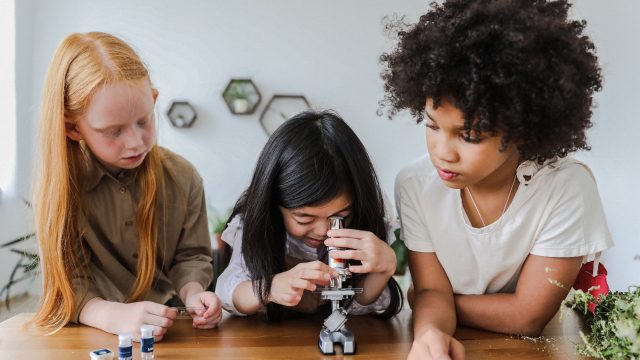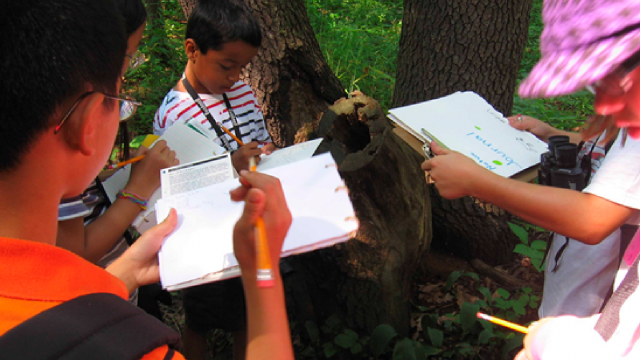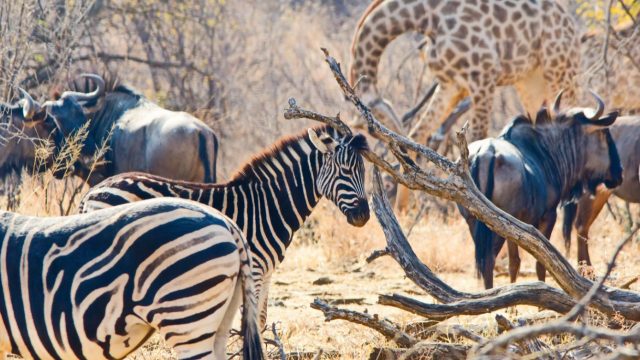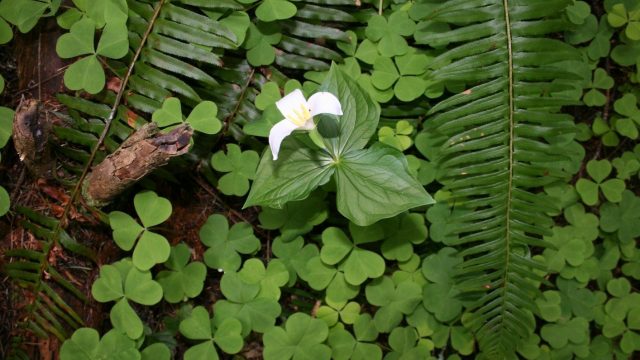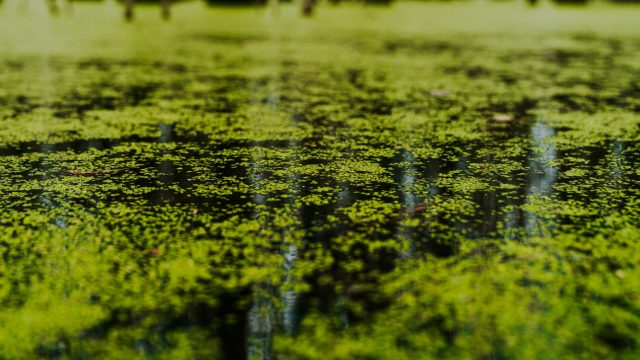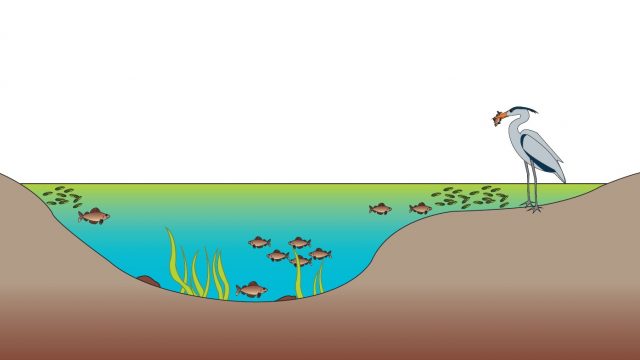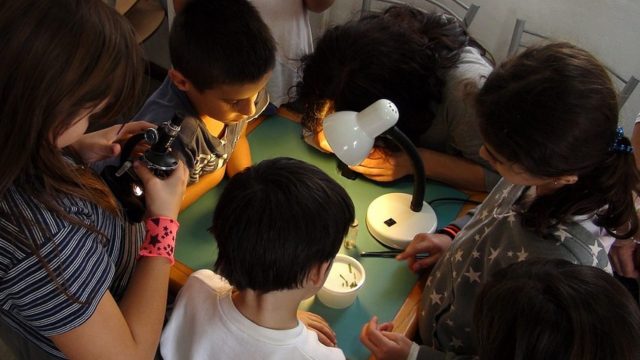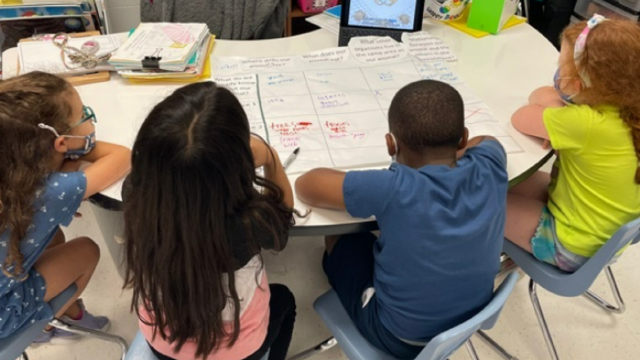Investigating Producers in Ecosystems

Unit Navigation
-
Unit Overview
Investigating Producers in Ecosystems
Authentic Literacy and Language (ALL) for ScienceRecommended for Grade 3
This complete and integrated 15-day teaching unit on producers in ecosystems follows the Authentic Literacy and Language (ALL) for Science curriculum framework that promotes science sense-making and language sense-making through three aligned components:

Learners participate in inquiry-based science activities as they investigate a “mysterious green substance” and research the components of different ecosystems. While working in collaborative teams, they will participate in the best practices of science as they read, write and think like scientists. Please refer to the “Before the Unit Begins” document for information on ordering algae and preparing for the unit.
-
Before the Unit Begins
BEFORE THE UNIT BEGINS
Welcome to Investigating Producers in Ecosystems! PLEASE READ THIS DOCUMENT before you begin teaching the unit—it contains information you need to know that may not be in the lessons. We also encourage you to read each day’s lesson ahead of time to prepare for instruction; the lessons in this unit provide details about materials, setup, and procedures.
Contents in the “Before the Unit Begins” Section:
- Lessons at a Glance: Daily List of Supplies
- “Ecosystem Resources” spreadsheet
- List of North American Ecosystems
- Model Organism
- Ordering the Algae
- Setting Up the Algae Culture
- Diatom Model
- Science Language
EXPANDED INFORMATION ABOUT THE CONTENTS
Lessons at a Glance: Daily List of Supplies: This is a snapshot of materials you will need to prepare ahead of time each day. Full instructions, including setup, are included in each day’s lesson.
“Ecosystem Resources” spreadsheet: We have compiled a spreadsheet of suggested texts, videos, and websites for the teacher to select from and use in inquiry circles. The list is only a starting point; please feel free to add any additional books, videos, etc. appropriate for your learners. We ask only that any additions be exploratory texts or media that include accurate scientific information.
The teacher may choose to select and organize resources for inquiry using an organizational tool such as a Nearpod or a similar tool.
While the unit focus is on producers, resource titles listed include ecosystems found in North America.
Note: Before the research begins, teams will delve into exploratory texts about different ecosystems to generate interest in these different ecosystems. Alternatively, the teacher may choose to read the texts aloud—the teacher knows best what will work for the class.
After reading the exploratory texts, teams of children will choose their top choices; the teacher will consider these choices when assigning ecosystems for research (see Day 1 lesson).
List of North American Ecosystems for research:
- aquatic polar
- desert
- tundra
- ocean
- temperate forest
- grassland
Team Inquiry Charts: The Inquiry Chart used by each team during research will need to be created ahead of time by the teacher for use on Day 2. See the Day 2 lesson for instructions. A model Inquiry Chart can be found in “Supporting Files” for Day 2.
Model Organism: Algae, specifically Chlorella vulgaris, will be the model organisms used by the teacher throughout the unit, and it will be the focus of the children’s guided science investigations. Note: Children will not learn the identity of the “green substance” (algae) until the guided science investigation on Day 10; until then, the teacher should refer to it as the “green substance.” It is hoped that the students, through their inquiry, will discover what the green substance actually is themselves.
Ordering the Algae: The science inquiry in this unit requires using a healthy algae culture. A ready to use culture of Chlorella vulgaris may be ordered from Algae Research Supply. This particular stock has proven to be very dependable for use in the classroom and can be used directly from the bottle. (No further culturing needed.)
Use this link to access ordering information from Algae Research Supply:
- When you click on the “size” menu, you will see several options for ordering the algae.
- You can order a single 1-liter bottle, or a kit that includes the algae culture, empty bottles for team investigations, and Secchi sticks.
- Alternatively, you can use new, clean 236mL (8oz.) empty water bottles for team algae investigations.
- When ordering the algae, consider how much you will need for each team of 4 children. Each team will need 2 bottles with a minimum of 88mL (3oz) of the algae in each bottle for the investigations. (A total of 177mL or 6oz. for each team)
Setting Up the Algae Culture:
- When the “mystery” substance is introduced on Day 2, place the one liter bottle of the culture where all can see it. (Remove any identifying labels!)
- Children will set up their investigations on Day 5. Each team will need 2 bottles with a minimum of 88mL (3 oz.) of the algae culture in each bottle. The amount of algae needed will be determined by the number of teams in the class.
- Detailed instructions for the setup and daily care of the algae can be found in the lessons for days 5 and 6.
Diatom Model: Lesson 1 requires that a model of a diatom—Stephanodiscus hantzschii—be constructed out of air-dry clay. The model should be built 3 days before the first class. Below is a photo of the actual diatom and an example of a clay model:

Additionally, you will need a shoebox to prepare for setting the model into.
- 5 windows will be cut out at different offset places to give different views of the model inside.
- Cut out and tape felt to cover the windows. Students will be looking through different windows (see Day 1 lesson for full instructions)
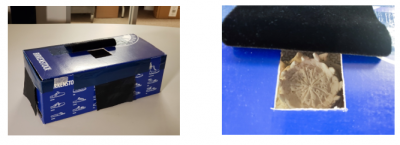
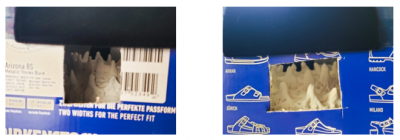
Science Language: This includes a complete list of Science Language used in this unit and the accompanying picture cards. The teacher will need to print a color copy of the Science Language picture cards before Day 1. Each day’s science language is also listed at the end of the lesson.
We encourage you to introduce new science language in context as you move through the lessons, using the science language cards as a visual, then posting them to construct a word wall (or making them accessible for the children’s use in your preferred manner).
SUPPORTING MATERIALS
- Any additional supporting documents referenced in a lesson (including anchor charts and printable or downloadable files) can be found in the “Supporting Files” section for that day’s lesson.
- Sample anchor charts provided for the mini-lesson reading strategies can be used as models when creating anchor charts with the class. The “Inquiry Toolbox” and “Team Roles” anchor charts can be reproduced for use as is.
-
Daily Activities

